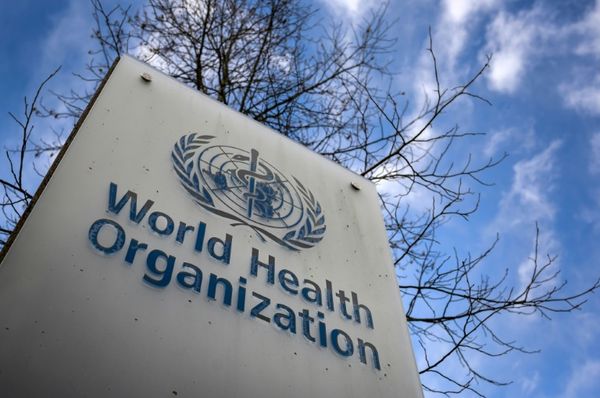
July ICE NY cocoa (CCN24) on Tuesday closed up +486 (+5.86%), and July ICE London cocoa #7 (CAN24) closed up +261 (+3.83%).
Cocoa prices Tuesday surged to 2-week highs. Lower cocoa production in the Ivory Coast, the world's largest producer, is a major bullish factor for cocoa prices. Government data Monday showed that Ivory Coast farmers shipped 1.46 MMT of cocoa to ports from October 1 to May 26, down by 30% from the same time last year. Trader Ecom Agroindustrial projects Ivory Coast 2023/24 cocoa production, which ends in September, will fall -21.5% y/y to an 8-year low of 1.75 MMT.
Gains in London cocoa were subdued Tuesday after the British pound (^GBPUSD) rallied to a 2-1/4 month high. The stronger pound undercuts cocoa that is priced in terms of sterling.
Since posting 2-3/4 month lows last Monday, cocoa prices have moved sharply higher after the Hightower Report warned that the lack of fertilizer and pesticide for West African cocoa farmers will hurt cocoa production during the 2024/25 season.
Another bullish factor for cocoa is dwindling inventories, as ICE-monitored cocoa inventories held in US ports fell to a 3-year low of 3,677,317 bags Tuesday.
Cocoa prices dropped to a 2-1/2 month low last Monday as supply concerns eased. Deliveries for the expired May London cocoa contract came in at 53,100 MT. While that was lower than the 67,350 MT during the same period last year, it shows that European cocoa supplies may not be as tight as earlier feared.
Price moves in cocoa have been amplified by a lack of liquidity, with open interest in cocoa futures near the lowest in over a decade. Last Friday's weekly Commitment of Traders (COT) report showed short-only positions in NY cocoa futures in the week ending May 21 were the lowest in more than nine years. Also, the long-only positions in London cocoa futures in the week ending May 21 were the lowest in almost three years.
Cocoa prices saw an extraordinary rally earlier this year to all-time highs on April 19 on supply concerns. Global cocoa grinders paid up in the cash market to secure supplies due to growing concerns that West African cocoa suppliers may default on supply contracts. Bloomberg reported on April 11 that the Ghana Cocoa Board is negotiating with major cocoa traders to postpone the delivery of at least 150,000 MT to 250,000 MT of cocoa until next season due to a lack of beans. Cocoa prices have rallied sharply since the beginning of the year, driven by the worst supply shortage in 40 years.
Cocoa also has support on signs that global cocoa demand remains resilient despite record-high prices. On April 18, the National Confectioners Association reported that North American Q1 cocoa grindings rose +9.3% q/q and +3.7 % y/y to 113,683 MT. Also, on April 18, the Cocoa Association of Asia reported that Q1 Asia cocoa grindings rose +5.1% q/q, although they fell -0.2% y/y to 221,530 MT. In addition, the European Cocoa Association reported that Q1 European cocoa grindings rose +4.7% q/q, although they fell -2.2% y/y to 367,287 MT.
Ghana's Cocoa Board (Cocobod) said on March 25 that Ghana's 2023/24 cocoa harvest would be only 422,500 MMT to 425,000 MT, half the country's initial forecast and a 22-year low, as extreme weather and disease decimated the cocoa crop.
Concerns about the West African mid-crop, the smaller of two annual harvests, are also leading to tightness in cocoa supplies. Projections for the Ghana mid-crop, which starts in July, have been cut to 25,000 MT compared with an earlier forecast of 150,000 MT. Also, the Ivory Coast cocoa regulator said on March 7 that it expects the Ivory Coast mid-crop, which officially starts in April, to fall -33% to 400,000 MT from 600,000 MT last year. In addition, projections for Nigeria's mid-crop have been reduced to 76,500 MT from an earlier estimate of 90,000 MT.
Cocoa found support on February 29 when the International Cocoa Organization (ICCO) projected that the global 2023/24 cocoa deficit would widen to -374,000 MT from -74,000 MT in 2022/23. ICCO projects global cocoa production in 2023/24 will fall by -11% y/y to 4.45 MMT, and global cocoa grindings will drop by nearly -5%, which would push the 2023/24 stock-to-grindings ratio to the lowest in more than 40 years.
Unfavorable growing conditions and crop disease on West African farms over the past year have curbed cocoa production and fueled a parabolic rally in cocoa prices. A global cocoa deficit is expected to extend into 2023/24 since current production is insufficient to meet demand. Also, cocoa prices are seeing support from the current El Nino weather event after an El Nino event in 2016 caused a drought that fueled a rally in cocoa prices to a 12-year high.
On January 25, the Ivory Coast cocoa regulator, Le Conseil Cafe-Cacao, halted forward cocoa sales for the 2024/25 season. The regulator halted forward sales until it had a clear picture of expected cocoa production in the Ivory Coast. The halt adds to the tumult of the region's cocoa supplies, and the impact could multiply supply concerns.
On the date of publication, Rich Asplund did not have (either directly or indirectly) positions in any of the securities mentioned in this article. All information and data in this article is solely for informational purposes. For more information please view the Barchart Disclosure Policy here.






